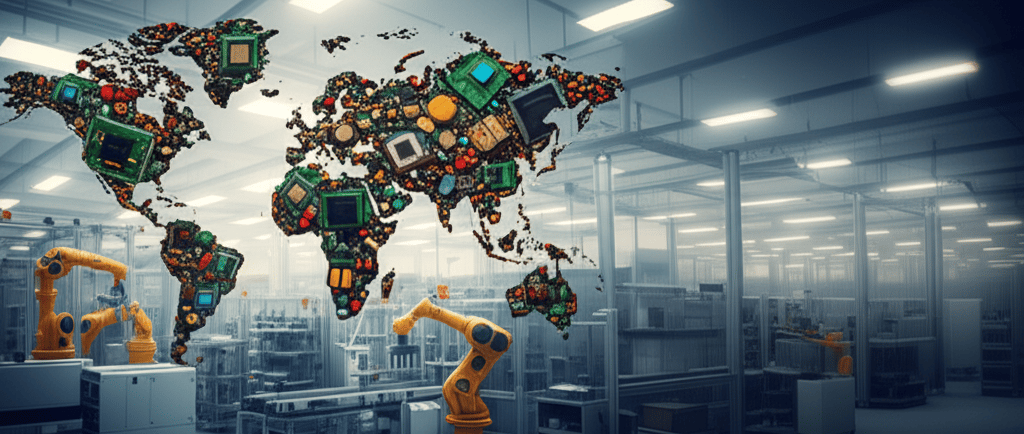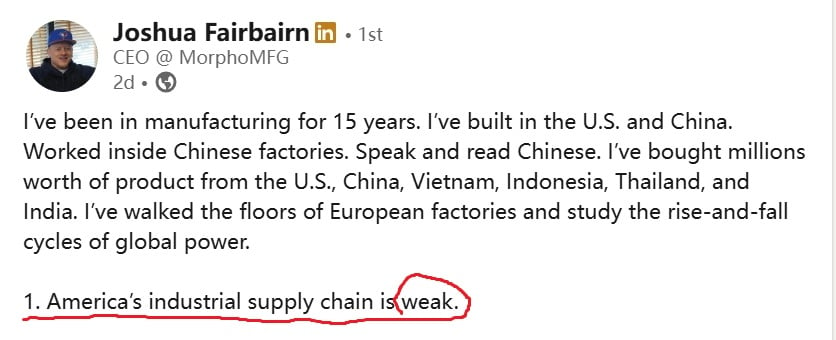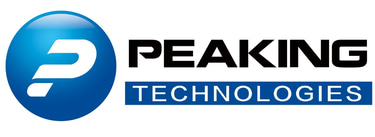Navigating the Global Manufacturing Maze: A Guide for Electronics Startups and Inventors
Recent discussions within the industry, highlighted by manufacturing expert Josh and corroborated by operations veteran Edwin Wilks, shed crucial light on the realities of manufacturing in the 21st century. Their insights underscore a critical truth: while the dream of "Made in America" holds sentimental value, the current landscape often points elsewhere for efficiency, expertise, and sheer capability.
5/25/20257 min read


The world of electronics manufacturing is a complex beast, especially for innovative startups and ambitious inventors. You've got a brilliant idea, perhaps a groundbreaking prototype, but how do you bring it to life at scale? The journey from concept to consumer-ready product is fraught with challenges, from sourcing components to managing production, and increasingly, understanding the nuances of global supply chains.
Recent discussions within the industry, highlighted by manufacturing expert Josh and corroborated by operations veteran Edwin Wilks, shed crucial light on the realities of manufacturing in the 21st century. Their insights underscore a critical truth: while the dream of "Made in America" holds sentimental value, the current landscape often points elsewhere for efficiency, expertise, and sheer capability. As an electronics manufacturer specializing in helping startups and inventors, we understand these realities intimately and aim to guide you through this intricate terrain.
The Elephant in the Room: America's Industrial Supply Chain and Manufacturing Capability
Let's address a foundational issue: the state of America's industrial supply chain. For consumer goods, the U.S. might appear to dominate, but try to source materials at scale, and you hit a wall. A furniture factory, for instance, needs far more wood than any retailer can stock. This isn't just about raw materials; it extends to specialized components and the underlying infrastructure.
Apple's continued reliance on Asia for iPhone production, despite tariffs, is a powerful testament to this reality. Why? Because all the necessary parts are "next door". Proximity, as Josh rightly points out, wins – always has. This isn't simply about cost; it's about the intricate web of suppliers, sub-suppliers, and specialized services that form a mature manufacturing ecosystem.
The core issue isn't a lack of desire to manufacture in the U.S.; it's a lack of capability. We buy chips from Taiwan not because they are cheap (they are not), but because they are the best. Decades of mastery cannot be faked or easily replicated. The U.S. has, in some critical areas like plastics, semiconductors, and tooling, lost its edge because the knowledge was allowed to retire. This means that even with high tariffs, you cannot magically replace that lost knowledge; you simply cannot manufacture what you no longer know how to make. For an electronics startup, this translates to significant hurdles if you're attempting to source and build entirely domestically for complex assemblies.
The China Factor: Beyond "Cheap Labor"
One of the most persistent misconceptions about global manufacturing, particularly regarding China, is the idea that outsourcing was primarily to save money on labor. Josh firmly debunks this, stating that this notion is outdated. He asserts that Chinese labor isn't cheaper; it's smarter.
Consider the modern Chinese factory floor: humans and robots work side-by-side. Robots handle welding, painting, and repetitive tasks, while humans focus on precision. Furthermore, China doesn't just utilize automation; they build it. They are the world leader in industrial robot production.
This sophisticated integration of human expertise and advanced automation, combined with an "insane work ethic, technical expertise, and modern infrastructure," creates what Josh terms "the world’s most dominant manufacturing ecosystem".
This isn't just about skill; it's deeply rooted in culture. In China, work ethic, discipline, and education are non-negotiable values. While these values are discussed in the U.S., Josh argues they are not always lived up to, citing concerns about focus and dedication within the workforce. For an electronics startup, understanding this cultural underpinning is vital when considering where your product will be manufactured. It speaks to the efficiency, problem-solving capabilities, and overall commitment to quality that can be found in established manufacturing hubs.
The Limits of Tariffs and "Made in America" Slogans
The prevailing political narrative often champions "Made in America" initiatives and employs tariffs as a tool to bring manufacturing back home. However, both Josh and Edwin Wilks offer a more nuanced and, frankly, stark perspective.
Tariffs, according to Josh, simply make things more expensive; they do not build capability. The "Made in America" push, while emotionally resonant, is seen as a "feel-good slogan masking a hard truth: we don’t have the infrastructure or the talent pipeline to fully replace China". Even if prices increase by 20-40%, most consumers will still opt for Chinese-made products. The harsh reality is that tariffs won't bring production home; they will merely "weed out the factories and brands that never deserved to survive in the first place".
Edwin Wilks largely agrees with Josh, acknowledging that for complex assemblies, China is currently unrivaled due to the "generational effort they’ve put in to secure that position". He does, however, see potential for a "resurrection of US manufacturing for some products," but crucially identifies the "talent/workforce pipeline" as the "biggest barrier to success" and an "insurmountable one in the short term".
For an electronics startup, this means that while patriotism might pull you towards domestic manufacturing, a pragmatic assessment of your product's complexity, cost targets, and time-to-market will often lead you to consider established international manufacturing partners. The "Made in America" label can be a powerful marketing tool for certain products, but for complex electronics, the current capabilities and supply chain realities need to be carefully weighed.


Where to Build Your Electronics Product: A Strategic Outlook for Startups and Inventors
Given these insights, where should an electronics startup or inventor look to manufacture their product?
Josh's ultimate conclusion is unambiguous: "The best place to manufacture anything right now is still China". This isn't a statement of preference but a reflection of the current reality for complex manufacturing. For electronics, where precision, integrated supply chains, and advanced automation are paramount, this holds particularly true.
However, the conversation isn't entirely monolithic. Edwin Wilks introduces other contenders for "large, similarly complex electromechanical assemblies," specifically mentioning Mexico and Brazil. He notes that while these countries present "slightly different launch and maintenance challenges to manage," Brazil is often discounted in broader discussions despite its potential.
For electronics startups and inventors, this opens up a strategic decision-making process:
For highly complex electronics with integrated supply chains: China remains the dominant force. The established infrastructure, technical expertise, and efficient ecosystem can significantly de-risk your production process and often offer the most competitive total cost of ownership, even with increased shipping or tariff considerations. Their mastery in areas like semiconductors and tooling, even if those parts aren't made in China, means the ecosystem to assemble and test them is highly developed.
Exploring Nearshoring (Mexico): For certain electronics products, particularly those targeting the North American market, Mexico presents an increasingly viable option. Its proximity to the U.S. can reduce lead times and shipping costs, and it has a growing manufacturing base. However, as Wilks notes, there might be different challenges in terms of launch and ongoing management compared to China.
Considering South America (Brazil): While less commonly discussed, Brazil's potential for electromechanical assemblies makes it a noteworthy contender for specific types of electronics, particularly if you are targeting South American markets or if your product aligns with their burgeoning industrial capabilities. This might involve a different set of logistical and regulatory considerations.
Niche Domestic Manufacturing (U.S.): For certain specialized, lower-volume, or highly sensitive electronics products, domestic manufacturing in the U.S. can still be a viable option. This is especially true if your product can leverage existing niche expertise, doesn't require a vast, integrated supply chain, or benefits significantly from a "Made in America" label for your target market. However, be prepared for potential challenges in sourcing specific components and a higher overall cost. It's crucial to acknowledge the current limitations in the talent and workforce pipeline.
Partnering for Success: What an Electronics Manufacturer Brings to Your Startup
As an electronics manufacturer focused on supporting startups and inventors, our role is to demystify this global landscape and provide you with a clear path to production. We bring:
Expertise in Global Sourcing: Leveraging networks that span China, Vietnam, Indonesia, Thailand, and India, we understand where to procure the best quality components at competitive prices, even for millions of dollars worth of product. This is crucial for avoiding the pitfalls of a weak domestic supply chain.
Navigating Cultural and Operational Nuances: Having worked inside Chinese factories and with experience across various global manufacturing hubs, we can bridge the cultural and operational gaps that often trip up new ventures. This includes understanding the "insane work ethic" and "technical expertise" that define dominant manufacturing ecosystems.
Strategic Manufacturing Placement: We help you assess your product's specific needs against the strengths of different manufacturing locations. Whether China offers the optimal blend of cost, scale, and capability for your complex assembly, or if Mexico or another region presents a strategic advantage, we provide data-driven recommendations.
Supply Chain Resiliency: In an increasingly unpredictable world, a robust supply chain is paramount. Our experience helps design supply chains that are not only efficient but also resilient, mitigating risks associated with single-source dependencies or geopolitical shifts.
Quality Assurance and Oversight: Regardless of where your product is manufactured, maintaining stringent quality control is non-negotiable. Our processes ensure that your vision is translated into a high-quality, reliable product that meets your specifications and market demands.
Scalability and Growth: We plan for your future. As your startup grows, your manufacturing needs will evolve. We help build scalable solutions that can adapt to increasing production volumes and future product iterations.
Conclusion: Your Journey to Market Starts Here
The insights from manufacturing veterans like Josh and Edwin Wilks confirm a complex reality: while the desire to build locally is strong, the current global manufacturing landscape, particularly for complex electronics, points to established international hubs. China, with its sophisticated ecosystem, integrated supply chains, and deep technical expertise, remains a formidable force.
For electronics startups and inventors, the key is not to fight this reality but to strategically leverage it. Rather than getting caught up in outdated narratives or feel-good slogans that don't reflect current capabilities, focus on where your product can be manufactured most efficiently, reliably, and cost-effectively.
Our mission is to be your trusted partner in this journey. We provide the expertise, the global network, and the practical guidance to transform your innovative ideas into tangible, market-ready electronic products. Don't let the complexities of manufacturing be a barrier to your success. Reach out to us, and let's discuss how we can help you navigate the global manufacturing maze and bring your electronic innovations to life.
